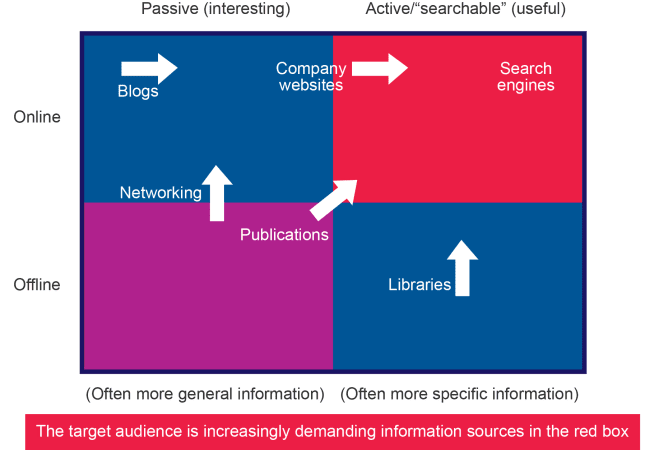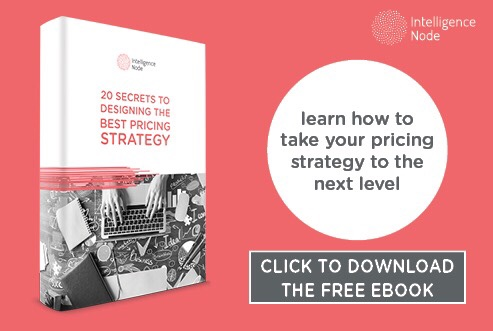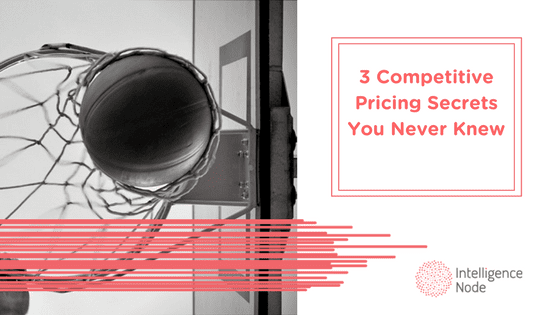Holding your ground in today’s business environment can be scary. The competition is huge, the technology is advancing and consumers are becoming more savvy and demanding. This all forms a highly competitive market whereas competitive advantage can be as easily lost as it was gained. Businesses “live” in a world where information is widely available than ever before. Each day, there are massive amounts of data generated that just waits for it to be gathered, analyzed and used for best purposes. However, it often just floats around, which brings us to the word of the day (actually, two words): competitive intelligence.
In essence, competitive intelligence (CI) is understanding and learning about your products, customers, and competition, as well as every other facet of business in order to make strategic decisions based on knowledgeable insights. It a learning curve about everything that affects one business, from the tiniest details to global-like situations so it stands to reason there may be instances where CI is not used to the best of its abilities.
Theoretically, that’s all fine and dandy, but as we favor a direct and practical approach, here’s what competitive intelligence can do for your business.
1. Focus on what you want to know
Finding out everything about every competitor in the marketplace is a good idea, but not particularly effective if you want quick results in today’s fast-paced business environment. A better choice is to focus on a few specific business segments or problems whose understanding and addressing is key to company’s success. That way, the aim of your intelligence operation will be to collect information to help resolve the matter that matters to you the most. If that requires monitoring large companies for openings in the market, so be it, but try not to dilute your efforts too much. Collecting information for key strategic decisions and identifying new competitive threats is usually an ongoing, day-to-day operation in which you always need to have your goal in sight.
2. It’s not solely about your competition
We know what you are going to say – it’s precisely called competitive intelligence, not business intelligence or market intelligence or whatever adjective you want, therefore, it must be all about competition. Still, CI is a multi-layered business discipline that branches out like a tree from the earth. The focus of competitive intelligence in not on your rivals alone, it’s on the market as a whole and everything that makes it a highly competitive battleground.

Source: B2B International
Failing to recognize the full value of competitive intelligence leads away from greater strategic flexibility. Using CI, a business can quickly adapt to market fluctuations and, if necessary, change its business strategy. For an example, we’ll use Pratt and Whitney, an aerospace manufacturer whose commercial engine division utilized CI by looking at all market aspects in an effort to stay competitive against its rivals, especially GE and Rolls Royce. As a result, the company deployed a highly successful breakthrough agenda for their new Geared Turbofan (GTF) engine, which wouldn’t be possible it P&W looked at each competitor separately.
Let’s get into specific details about what CI enables:
3. Perform win/loss analysis
A win/loss analysis requires surveying two groups of people
- new customers
- prospects attracted by competition
Why? You want to unfold and understand the reasons for their actions. During these interviews, it would be highly beneficial to ask your customers the motives for looking for your product and the reasons why they chose (or didn’t choose) your company, if they went with a competitor’s offering. Gaining insight from these simple, yet valuable questions will provide you with an understanding of your product among customers, competition’s selling points over your product, as well as what features are necessary to change or implement.
In 2015, Nestlé’s popular Maggi noodles had to be recalled from India due to containing a whopping seven times more lead (no big deal) that allowed. Up to that point, Maggi’s sales accounted for a quarter of Nestlé’s $1.6 billion sales in India, with the food giant having a 63 percent market share. The subsequent five-month ban of Maggi cost Nestle $277 million in sales with a half a billion dollars of damages to the brand name. However, Baba Ramdev, a famous local yoga guru and an owner of the growing local consumer goods company in India, launched a competing product (Patanjali noodles) to a great success. The key was catering to what people wanted to the product was marketed as a healthier option than Nestlé’s, while also having a lower price to incentivize sales.
4. Use competitive intelligence tools
CI presents a vast field of data that takes a considerable amount of time to sort out into actionable insights if you do it manually. Time matters greatly in today’s business operations which is why there are competitive intelligence tools that automate the process and provide real-time results. Therefore, a company should opt for a software solution that provides data about both your competitors and market, all the while keeping your budget in place and minimizing risk. What these tools offer are
- Competitive market and competitor data (product tracking, industry trends, etc.);
- Real-time intelligence;
- Market gap minimization;
- Predictive “what if” scenarios;
- Time-saving through minimal human intervention;
- Recommendations and more.
CI could also present you with potential problems regarding your sales approach, which you should discuss and coordinate with your sales team to correct.
Conclusion
Competitive intelligence, at its core, means learning as much and as quickly as possible about one’s industry in general, competition and market in order to be able to anticipate and face numerous challenges head on. In order to use competitive intelligence the right way, businesses must use it for insight management, not as a tool to search and distribute information. It allows a direct access to input into company’s strategic plans, smartly tapping a vast amount of external data to remain competitive.
CI has the power to be a facilitator of strategic advancement and change. Optimally, it will breed an organizational culture that relies on modern tools that provide real-time intelligence to deal with real-time challenges of ambiguity and prevailing competitors. It’s not enough to gather data and employ it, but rather to use it the right way as shown in this post.
If you found this useful and you’d like to learn how to take your pricing strategy to the next level, we invite you to download our free 20 secrets to designing the best pricing strategy eBook. Click below to take advantage of this opportunity.






